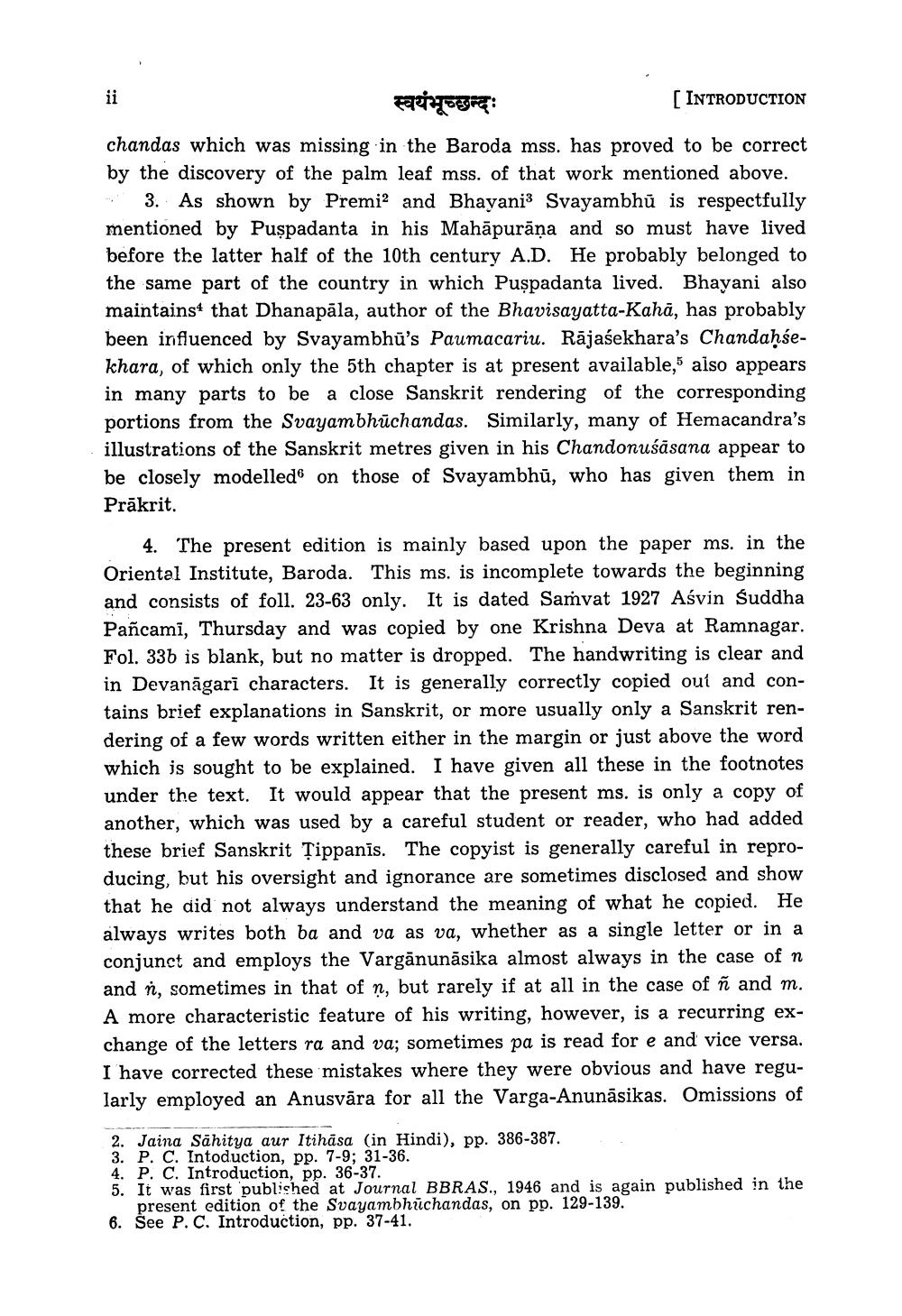________________
स्वयंभूच्छन्दः
[INTRODUCTION chandas which was missing in the Baroda mss. has proved to be correct by the discovery of the palm leaf mss. of that work mentioned above.
3. As shown by Premia and Bhayani? Svayambhū is respectfully mentioned by Puşpadanta in his Mahāpurāna and so must have lived before the latter half of the 10th century A.D. He probably belonged to the same part of the country in which Puşpadanta lived. Bhayani also maintains that Dhanapāla, author of the Bhavisayatta-Kahā, has probably been influenced by Svayambhu's Paumacariu. Rājasekhara's Chandaḥsekhara, of which only the 5th chapter is at present available, also appears in many parts to be a close Sanskrit rendering of the corresponding portions from the Svayambhuchandas. Similarly, many of Hemacandra's illustrations of the Sanskrit metres given in his Chandonuśāsana appear to be closely modelled on those of Svayambhū, who has given them in Prākrit.
4. The present edition is mainly based upon the paper ms. in the Oriental Institute, Baroda. This ms. is incomplete towards the beginning and consists of foll. 23-63 only. It is dated Samvat 1927 Aśvin Suddha Pañcamī, Thursday and was copied by one Krishna Deva at Ramnagar. Fol. 336 is blank, but no matter is dropped. The handwriting is cle in Devanāgarī characters. It is generally correctly copied out and contains brief explanations in Sanskrit, or more usually only a Sanskrit rendering of a few words written either in the margin or just above the word which is sought to be explained. I have given all these in the footnotes under the text. It would appear that the present ms. is only a copy of another, which was used by a careful student or reader, who had added these brief Sanskrit Tippanīs. The copyist is generally careful in reproducing, but his oversight and ignorance are sometimes disclosed and show that he did not always understand the meaning of what he copied. He always writes both ba and va as va, whether as a single letter or in a conjunct and employs the Vargānunāsika almost always in the case of n and ń, sometimes in that of ņ, but rarely if at all in the case of ñ and m. A more characteristic feature of his writing, however, is a recurring exchange of the letters ra and va; sometimes pa is read for e and vice versa. I have corrected these mistakes where they were obvious and have regularly employed an Anusvāra for all the Varga-Anunāsikas. Omissions of
2. Jaina Sahitya aur Itihasa (in Hindi), pp. 386-387. 3. P. C. Intoduction, pp. 7-9; 31-36. 4. P. C. Introduction, pp. 36-37.
It was first published at Journal BBRAS., 1946 and is again published in the
present edition of the Svayambhuchandas, on pp. 129-139. 6. See P. C. Introduction, pp. 37-41.




